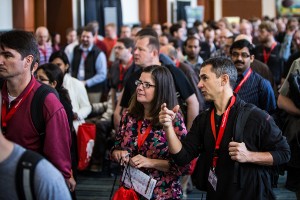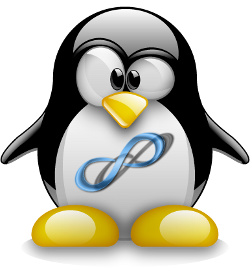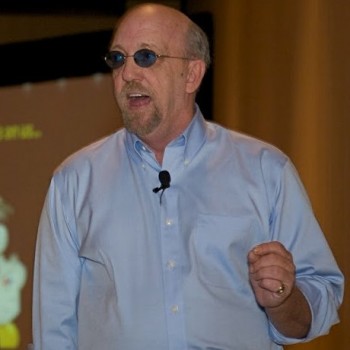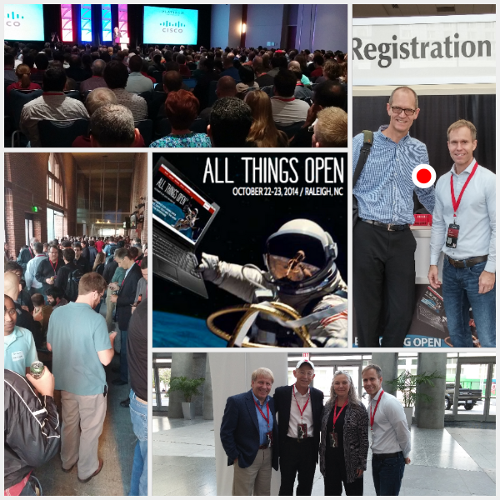Okay…I’ve had about enough of this. “This” is the frenzied pitch of an argument that computers do or don’t improve a child’s academic performance or…
Posts published in “Community”
I went to the Ohio Linux Fest this year to give the closing keynote address to somewhere around 300 folks. And trust me…this will show…
It’s all over for Hello World’s fundraising campaign on Indiegogo — and what a success it was.
You may remember that the project, which makes short educational videos on Linux and other tech subjects, began a crowdsourcing campaign on September 10th, hoping to raise $2,048 needed to purchase new equipment. On October 9th we reported that the project had exceeded its goal, with a total at that time of $3,145. The campaign ended nine days ago, on October 20th, with the total raised at $3,705 or 181 percent of the target.
Christine Hall has been a journalist since 1971. In 2001, she began writing a weekly consumer computer column and started covering Linux and FOSS in 2002 after making the switch to GNU/Linux. Follow her on Twitter: @BrideOfLinux
For nearly a month now, we at FOSS Force have had no trouble reaching the popular FOSS sites Tux Machines and TechRights. Both sites are published by Roy Schestowitz and both sites, especially the former, had been offline during much of September due to a prolonged DDOS attack.
On October 4th, when we last reported on this, accessibility to both sites was greatly improved but still somewhat spotty. During most of this month, however, we’ve had no noticeable difficulty reaching either site.
According to Schestowitz, although the site continues to be under fire, he and his team have developed methods to deal with the attacks.
There was absolutely nothing wrong with this year’s All Things Open conference. There were a few glitches, as might be expected, but not enough to matter. Was it perfect? Probably not. Perfection at a conference would probably be pretty boring — and boring would be a fault keeping it from being perfect, if you’ll excuse a little circular logic. Let’s just say say that ATO was more than good enough — and then a lot more.
But now it’s over, one for the record books, as they say, leaving behind memories and anticipation for 2015.

I saw this last year at ATO, which is about the only opportunity I have to rub elbows with big tech. This year, I no longer raised an eyebrow when I saw good things going on and positive energy being generated by the development teams at companies with worrisome business practices. I figure this is a good thing. The suits need to be surrounded by FOSS folks. Maybe a little of that “share and share alike” philosophy will rub off.
Take Facebook, for example. There’s more going on with the social giant besides Zuckerberg and his friends being busy turning data mining into profits.

It seems that the company is committed to open sourcing practically everything it creates, from hardware to software. I knew about the company’s open sourcing of green hardware through the Open Compute Project, but I’d assumed the company was like many other firms, given its track record on privacy issues — happy to build infrastructures on open source and give nothing back.
Not true, according to Pearce.
Christine Hall has been a journalist since 1971. In 2001, she began writing a weekly consumer computer column and started covering Linux and FOSS in 2002 after making the switch to GNU/Linux. Follow her on Twitter: @BrideOfLinux



 Most times, any concern expressed is coming from the parent. Of course it would be. Their minds are locked into doing things one way.
Most times, any concern expressed is coming from the parent. Of course it would be. Their minds are locked into doing things one way. 
 It also seems to fit with one of the underlying philosophies of the distro. Mint is famous for being a desktop that anybody can use. Updates on the dash is a concept which a new-to-Linux Windows’ user can understand, maybe even without having to go to the forums for help — and a piece of cake for experienced free software users. In my case, the only problem I had is that I misunderstood the severity numbering scheme, figuring one to be most severe instead of the least, but I easily managed to patch and update my system.
It also seems to fit with one of the underlying philosophies of the distro. Mint is famous for being a desktop that anybody can use. Updates on the dash is a concept which a new-to-Linux Windows’ user can understand, maybe even without having to go to the forums for help — and a piece of cake for experienced free software users. In my case, the only problem I had is that I misunderstood the severity numbering scheme, figuring one to be most severe instead of the least, but I easily managed to patch and update my system.




 A biennial tradition in the San Francisco Bay Area, MeetBSD 2014 uses a mixed unConference format featuring both scheduled talks and community-driven events such as birds-of-a-feather meetings, lightning talks, and speed geeking sessions. MeetBSD can be traced back to a local workshop for BSD developers and users, hosted annually in Poland since 2004. Since then, MeetBSD’s popularity has spread, and it’s now widely recognized as its own conference with participants from all over the world.
A biennial tradition in the San Francisco Bay Area, MeetBSD 2014 uses a mixed unConference format featuring both scheduled talks and community-driven events such as birds-of-a-feather meetings, lightning talks, and speed geeking sessions. MeetBSD can be traced back to a local workshop for BSD developers and users, hosted annually in Poland since 2004. Since then, MeetBSD’s popularity has spread, and it’s now widely recognized as its own conference with participants from all over the world.